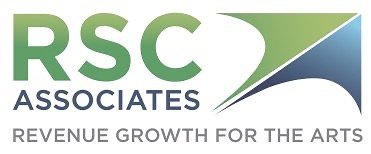SELLING YOUR STORY - PART 1
With Bob Swaney
This week’s podcast dives deep into the art of messaging — specifically, how to talk to major donors in a way that resonates, inspires, and ultimately secures their support.
A well-crafted message can transform a hesitant prospect into a passionate advocate. But the wrong words can shut down a conversation before it even starts. Today, let’s look at how to get it right, from crafting a strong Case Statement and defining who it is for, to understanding the messages to amplify and the ones to avoid.
Read the full transcript below or click the button to listen.
FULL TRANSCRIPT OF THE PODCAST
Today, we're diving deep into the art of messaging — specifically, how to talk to major donors in a way that resonates, inspires, and, ultimately, secures their support.
A well-crafted message can transform a hesitant prospect into a passionate advocate. But the wrong words can shut down a conversation before it even starts. Today, let’s look at how to get it right, from crafting a strong Case Statement to defining who it is for, understanding the messages to amplify and the ones to avoid.
As we get into this, think about these things:
How do YOU promote your arts organization?
What words do you use?
What stories do you tell?
For many staff, Board, and artists, they have a tough time answering. Let’s touch on how to get better at not just telling your organizational story but selling it, too, through a strong case statement and looking outward.
A Strong Case
At RSC Associates, we help clients build their messages balanced on Facts, Finances, and Feelings. The first two – Facts and Finances are fairly easy for anyone to pull together based on the information on hand. However, the “Geelings,” which can so strongly influence a donor prospect, can often be missed in the Case. That’s why we help develop and find that balance. Without the “feelings,” the facts and finances fall flat. Facts and Finances “tell,” while Feelings “sell.” I’ll combine this balance by using some examples as we look at five essentials for developing a strong fundraising case statement in the arts.
1. Clarity of Mission and Vision
Your Case Statement should begin with a clear and compelling mission statement. This is the “who we are” declaration. What does your organization stand for? What is the vision that guides your work? Make sure this is front and center. Remember, donors are investing in your mission and vision as much as in your specific projects.
Example:
"At the heart of the Symphony Orchestra is a commitment to bringing outstanding musical performances to our community, fostering a love for the arts in future generations, and enriching the cultural fabric of our city."
2. Impact and Relevance
Show your donors how your organization makes a difference. This is the “what you do” statement. Share tangible examples of your impact — stories of lives changed, communities enriched, and cultural landscapes transformed. Donors want to know their contributions have real-world significance. Also, they may make their first gift because they like what you do, but later they’ll give because they love who you are.
Example:
"Last year, thanks to support from donors like you, we were able to offer free music lessons to over 1,000 children from struggling households, sparking their imagination and a lifelong passion for the arts."
3. Financial Transparency
Be upfront about how donations will be used. This is your “how much it costs” statement. Depending on the donor, be ready to break down your budget, highlight key expenses, and explain how donor dollars make a difference. Transparency builds trust, and trust is essential for long-term donor relationships.
Example:
"Your contribution will help us engage our musicians throughout the community, ensuring that our organization remains a meaningful part of the community."
4. Unique Value Proposition
What sets your organization apart? This is your answer to “Why us?” It’s really asking why a donor should choose to support your organization over other worthy causes. Don’t denigrate other organizations in your answer, but highlight what makes your organization unique, whether it's your artistic offerings, community outreach, innovative programs, or historical significance.
Example:
"Unlike any other gallery in the region, our museum combines cutting-edge contemporary art with immersive educational experiences, making art accessible and engaging for all."
5. Vision for the Future
Paint a picture of the future your organization is striving to create. This is the “where we’re going” moment. What are your long-term goals? How will donor support help you achieve them? Inspire your donors with a vision they can believe in and want to participate in.
Example:
"With your support, we aim to expand our reach, bringing our groundbreaking performances to new audiences and reinforcing our city as a cultural hub."
Messaging: Outward-Facing Into the Community
Now that we’ve covered some of the basics of a strong Case Statement, let’s talk about the importance of making your message outward-facing. When you speak to major donors, it’s crucial to frame your narrative to resonate with them and the broader community because you are part of that community. Here are some of the direct benefits of “turning the mirror outward” and describing how your organization is a reflection of what is important to community:
1. Building a Broader Base of Support
When your message resonates with the community, it creates a ripple effect. Major donors are often influenced by the community’s perception of your organization. Major donors are more likely to follow suit if your community values you.
2. Creating Ambassadors
A compelling, community-focused message turns donors into ambassadors. They will share your story with their networks, expanding your reach and influence. This can lead to new donor opportunities and partnerships. This is where developing those warm feelings about the organization really matters. This is also where stories – the feelings – are created.
3. Fostering a sense of Belonging
An outward-facing message emphasizes inclusion and broader community impact. It shows that your organization values a variety of voices and contributions, fostering a sense of shared purpose and inspiration. One warning – if you say it, you’d better be doing it!
As we wrap this up, remember this: the key to successful major donor communication lies in crafting clear, compelling, and community-focused messages. Avoid desperation and elitism, steer clear of complex jargon and negative comparisons, and instead amplify messages of impact, shared vision, success, innovation, and gratitude. And finding the balance between Facts, Finances, and Feelings is what brings your message to life!



